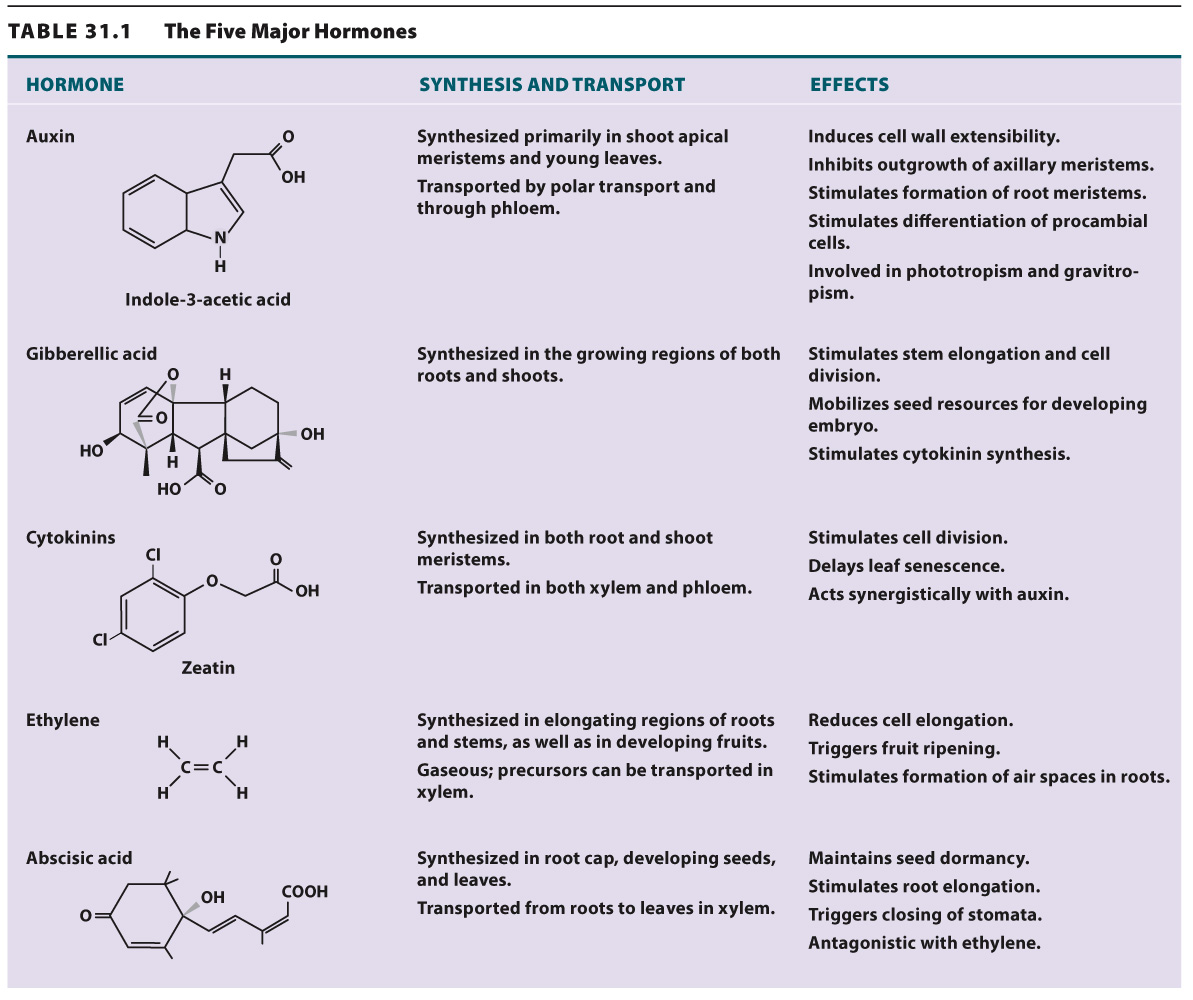Hormones affect the growth and differentiation of plant cells.
Hormones are chemical signals that influence both growth and development. The term “growth” refers to irreversible increases in size, while “development” encompasses the formation of new tissues and organs, as well as the differentiation of specific cell types. Hormones play two roles in plant growth and development. First, they help establish and maintain basic patterns of the plant body plan: How are leaves arranged? Where do branches form? How much do internodes elongate? Second, they coordinate growth in different parts of the plant in response to both internal and external environmental factors. For example, hormones guide the growth of a stem toward sunlight and control which axillary buds will grow into branches. Hormones affect plant growth and development both by influencing physiological processes, such as the activity of membrane transport proteins, and by altering patterns of gene expression.
Traditionally, plant biologists have recognized five major plant hormones: auxin, gibberellic acid, cytokinins, ethylene, and abscisic acid (Table 31.1). How is a small number of hormones able to shape the continuing growth and development of plants? One characteristic of these hormones is that each triggers a wide range of developmental effects. For example, ethylene can lead to fruit ripening (Chapter 30) and also slows the elongation of roots and stems. How a cell responds to a particular hormone depends both upon its developmental stage and its position within the plant. In addition, the effect of any one hormone is often influenced by the presence of one or more other hormones.

Several chemicals with hormone-
To illustrate how hormones influence plant growth and development, we consider the role of three hormones, auxin, gibberellic acid, and cytokinins, in establishing the basic patterns of shoot development. Later in the chapter, we consider the role of hormones in root development (section 31.4) and plant growth in response to light and gravity (section 31.5).